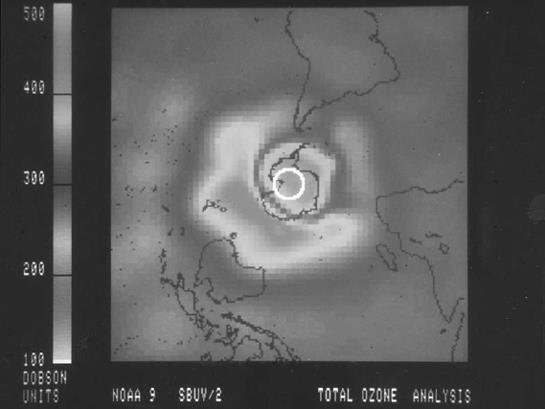Ozone, a form of oxygen with three atoms instead of the normal two, is highly toxic; less than one part per million of this blue-tinged gas is poisonous to humans. In Earth’s upper atmosphere (stratosphere), it is a major factor in making life on Earth possible. About 90 percent of the planet’s ozone is in the ozone layer. The ozone belt shields the Earth from, and filters the excessive ultraviolet (UV) radiation generated by, the sun. Scientists predict that a diminished or depleted ozone layer could lead to increased health problems for humans, such as skin cancer, cataracts, and weakened immune systems. Increased UV can also lead to reduced crop yields and disruption of aquatic ecosystems, including the marine food chain. While beneficial in the stratosphere, near ground level it is a pollutant that helps form photochemical smog and acid rain.

